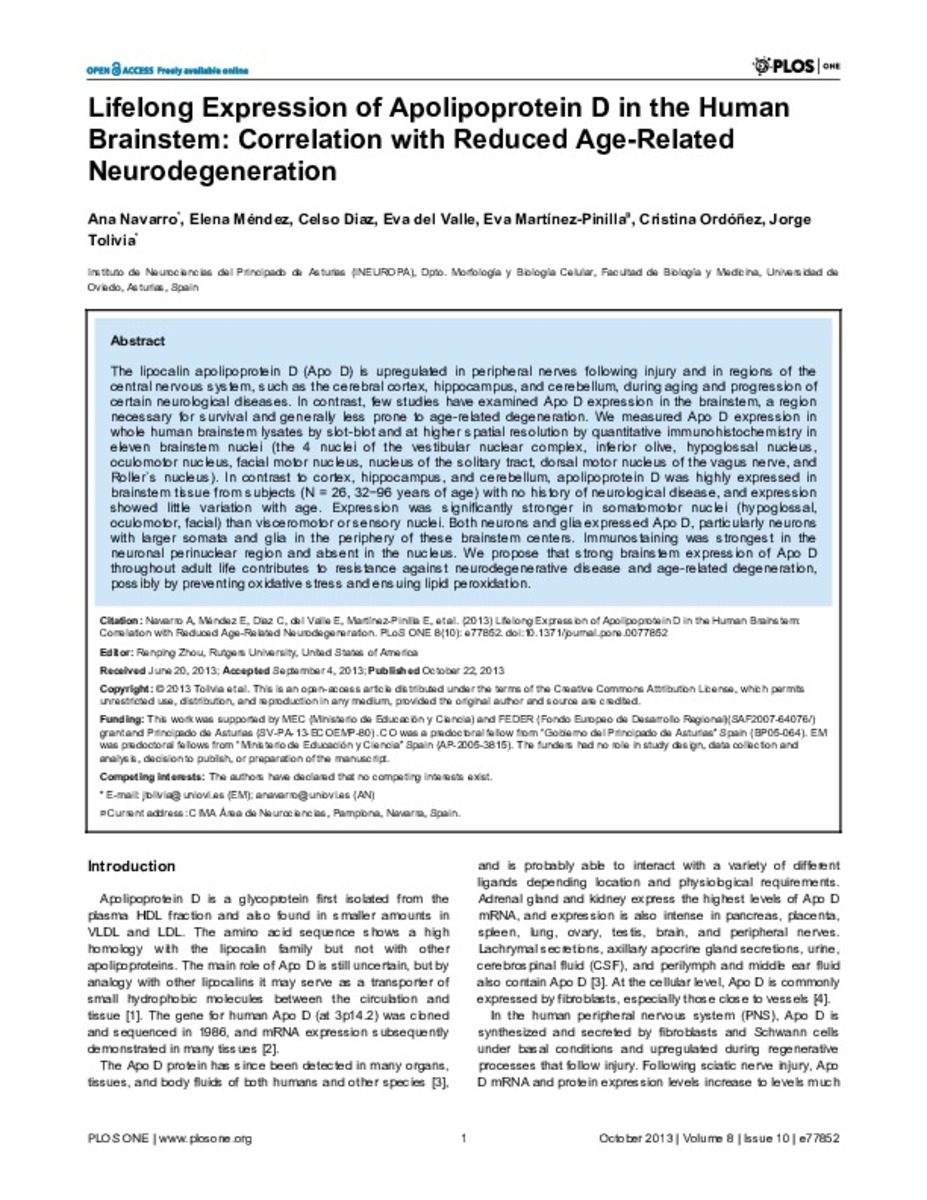Lifelong expression of apolipoprotein D in the human brainstem: correlation with reduced age-related neurodegeneration
Palabras clave :
Materias Investigacion::Ciencias de la Salud::Neurología
Neuroprotective
Tissues
Neural damage
Apo D protein
Fecha de publicación :
2013
Editorial :
Public Library of Science
Proyecto:
Ministerio de Educación y Ciencia, Fondo Europeo de Desarrollo Regional (SAF2007-64076/), Principado de Asturias (SV-PA-13-ECOEMP-80).
Cita:
Navarro A, Méndez E, Diaz C, del Valle E, Martínez-Pinilla E, Ordóñez C, et al. Lifelong expression of apolipoprotein D in the human brainstem: correlation with reduced age-related neurodegeneration. PLoS One. 2013 Oct;8(10)
Aparece en las colecciones:
Estadísticas e impacto
0 citas en

0 citas en

Los ítems de Dadun están protegidos por copyright, con todos los derechos reservados, a menos que se indique lo contrario.







